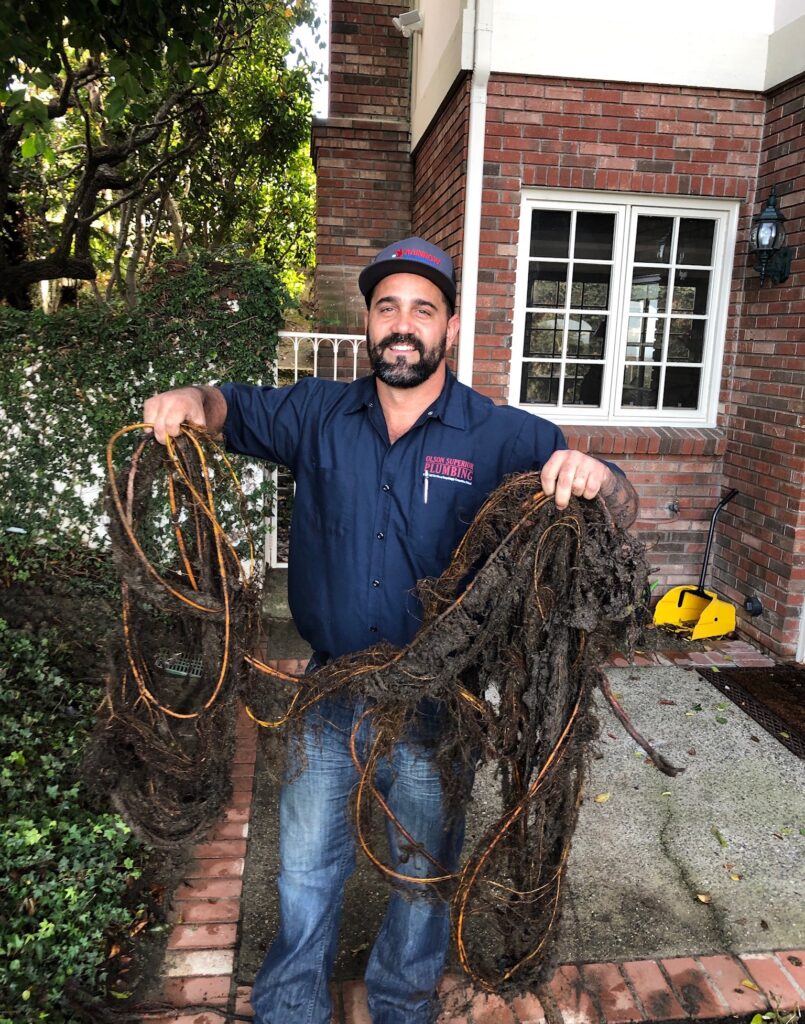Tips for Averting Kitchen Area Sink Clogs and Furnace Failings
Just how to Repair a Dripping Pipeline and a Dripping Radiator ==============================================================
Handling a pesky leak, eh? Whether it remains in your pipes or radiator, those undesirable drips can swiftly end up being an annoyance. Yet don't fret with the appropriate method, you can get that leakage repaired and avoid future headaches. Initially, you'll need to recognize the source and prepare your workspace. After that, it's time to tackle the issue head-on. Yet prior to you dive in, there's an important action you can't pay for to miss. Allow's check out properly to deal with those leakages and keep your home dry and comfy.
Secret Takeaways
- Diagnose the source of the leak by inspecting the afflicted area, checking joints and links, and paying attention for trickling noises.
- Turn off the water system and clear the work area to prepare for the repair service process.
- Tighten up loose pipe joints or replace the broken section to deal with a dripping pipeline.
- Address a leaking radiator by tightening the packaging nut on the dripping shutoff or changing the shutoff if needed.
- Routinely examine and keep the radiator and pipe system to prevent future leaks.
Recognizing the Source of the Leak
To fix a dripping pipeline or radiator, you should first identify the resource of the leakage. Thoroughly examine the damaged location, seeking any type of visible indications of dampness or water damage. Examine the joints, connections, and seals for fractures, holes, or loose installations that can be triggering the leak.
One of the most effective methods to find the source of the leakage is to seek water discolorations on the wall surfaces, floorings, or ceiling. These water spots can give clues as to where the leak is stemming. Furthermore, you can attempt tapping along the pipes or radiator to pay attention for any trickling audios that might show the source of the leak.
As soon as you have actually pinpointed the place of the leak, you can start the procedure of fixing it. This might involve tightening up installations, replacing washing machines, and even changing the whole pipeline or radiator part. By accurately identifying the leak, you'll be much better outfitted to find a lasting remedy.
Preparing the Work space
First, make certain you have actually shut off the water to the influenced pipe or radiator. This will stop further water leak and make the repair service procedure more secure.
Next off, clear the prompt area around the leakage, eliminating any furnishings, flooring, or various other materials that can block your accessibility.
With a clear office, you can now arrange your devices and materials. Collect the necessary materials like wrenches, pliers, a bucket, cloths, and any kind of customized parts needed for the repair. Organize these products within very easy reach so you can function successfully.
Remember to verify that you have everything you require before starting the fix.
Correct workspace organization and tool selection are vital to an effective pipeline or radiator repair. By preparing the area and having your devices ready, you'll have the ability to deal with the task swiftly and safely.
Make the effort to establish your work area, and you'll be one action better to resolving that pesky leakage.

Shutting down the Water Supply
Prior to attempting any type of repair, you'll require to shut off the water supply to the influenced pipeline or radiator. This assures no extra water escapes throughout the repair, making the process more secure and more effective.
Situate the closest shut-off shutoff, which might be near the component or along the main water line, and transform it clockwise to quit the flow.
There are a few usual sorts of valves you might encounter. Gateway shutoffs are the most typical, with a wheel-shaped handle that turns to open up or close the shutoff. Ball valves have a round plug that rotates to manage the water flow. Angle stops are frequently made use of for private components, with a straight or tilted body and a deal with that turns the water on and off.
Once the water is shut off, open any type of faucets or components downstream to relieve pressure and drain the line. This will certainly make the repair work a lot easier. Double-check that the supply is completely closed before waging the solution.
Fixing a Dripping Pipe
As soon as you've switched off the supply of water, you can reach deal with dealing with the dripping pipe. Thoroughly check the location around the leak to figure out the cause, whether it's a crack, hole, or loose joint. Relying on the issue, you might require to change a section of the pipe or just tighten up a connection.
For leakage detection, search for indications of wetness, water discolorations, or pools. When you have actually found the resource, you can start the pipe repair process. If the pipeline is fractured or has an opening, you'll need to eliminate the damaged area and replace it with a new item. Make use of a pipe cutter or hacksaw to make clean, straight cuts, and make sure the new area fits snugly.

If the issue is a loosened joint, try tightening the link with a wrench. You might also require to utilize plumber's putty or tape to secure it. Make certain to check for any kind of other potential leaks before turning the water back on and checking the repair work. 24 hour plumber
Resolving a Leaking Radiator
If your home's radiator is leaking, you'll need to address the issue promptly to prevent water damage and warranty efficient heating.
Examine the radiator closely to identify the resource of the leak, whether it's a split, a loose connection, or a trouble with the valves.
To find the leakage, carefully examine the whole radiator, including the valves, pipes, and any kind of visible joints or fittings.
When you have actually situated the resource, switch off the heating unit and allow the radiator to cool totally prior to attempting any repairs.
For a leaking shutoff, you may be able to tighten up the packing nut or change the shutoff completely.
If the leakage is originating from a crack or joint, you'll likely need to spot the radiator or, in many cases, change it entirely.
Remember to comply with appropriate radiator maintenance methods, such as frequently hemorrhaging the system and flushing the radiator, to prevent future leaks.
Stopping Future Leakages
To avoid future leakages in your house's radiator system, regularly evaluate the elements and address any problems without delay.
Keeping the system by hemorrhaging the radiators and flushing the pipelines can likewise help minimize the risk of leaks down the line. Regular upkeep is key to leakage prevention.
Check the radiators and pipes for indicators of wear, rust, or damages, and address any type of troubles quickly. Hemorrhage the radiators yearly to launch trapped air, which can trigger stress accumulation and leakages. Flushing the pipelines every couple of years will remove any type of sludge or debris that can cause blockages and leakages.
Additionally, bear in mind the age of your radiator system. Older systems are extra susceptible to leaks as the components wear down gradually.

Think about upgrading to a much more modern-day, energy-efficient system if yours is nearing the end of its life-span. By staying proactive with upkeep and timely repairs, you can safeguard your home from the headache and damage brought on by radiator and pipe leaks.
Frequently Asked Inquiries
What Devices Are Required for Pipeline and Radiator Repair?
To fix a leaking pipe or radiator, you'll need a few crucial devices.
Start with monkey wrench to tighten installations and a basin to catch water.
You'll additionally need pipeline insulation, an energy blade, and radiator fittings like gaskets or washing machines.
Don't neglect a bucket, dustcloths, and towels to clean up any type of spills.
With the right devices on hand, you can take on those bothersome leakages and obtain your plumbing back in great form.
How Do I Securely Throw Away Old Pipe and Radiator Materials?
When dealing with old pipe and radiator products, it is very important to do so safely.
Start by separating any kind of steel components, as they can often be recycled.
Nevertheless, be cautious with any type of staying liquids or insulation, as they might be thought about hazardous waste.
Get in touch with your neighborhood authorities on the appropriate disposal techniques in your area.
Can I Carry Out These Repair work if I Have No Prior Experience?
You can certainly perform these repair work also if you have no prior experience.
With the appropriate DIY confidence and access to useful knowing sources, you can take on these jobs effectively.
Don't be afraid to enter and get your hands filthy there are lots of on-line tutorials and overviews that'll walk you via the process step-by-step.
Just take it reduce, adhere to the directions very carefully, and you'll be repairing those leaks in no time at all!
What Are the Typical Reasons For Pipeline and Radiator Leaks?
Pipe and radiator leaks can stem from numerous causes, such as corrosion, damage, or even incorrect installment.
To identify the issue, you'll require to carry out a leak detection examination, which might include utilizing sealer kinds like epoxy or silicone.
When you have actually identified the source of the leak, you can take steps to repair it, like replacing a damaged section or applying the suitable sealant.
Don't worry if you've never ever done this prior to – with the right devices and a little research study, you can tackle these repair services.
Just how Do I Know if I Need to Change the Entire Pipe or Radiator?
To identify if you require to change the entire pipeline or radiator, you'll wish to inspect the pipeline very closely for cracks, holes, or comprehensive rust.
Inspect the radiator's efficiency by monitoring its warm result.
If the pipe has major damages or the radiator isn't heating effectively, you'll likely need to replace the full component.
Yet small issues might be fixable with sealers or simple repairs.
Evaluate the extent of the issue prior to deciding if substitute is required.
Final thought
To avoid future leakages, consistently evaluate your pipes and radiator.
Shut off the water supply before making repair services, and ensure the location is completely dry prior to recovering circulation.
With the right tools and techniques, you can promptly fix a dripping pipe or radiator and avoid water damages.
Take your time, work safely, and don't think twice to call a professional if needed.